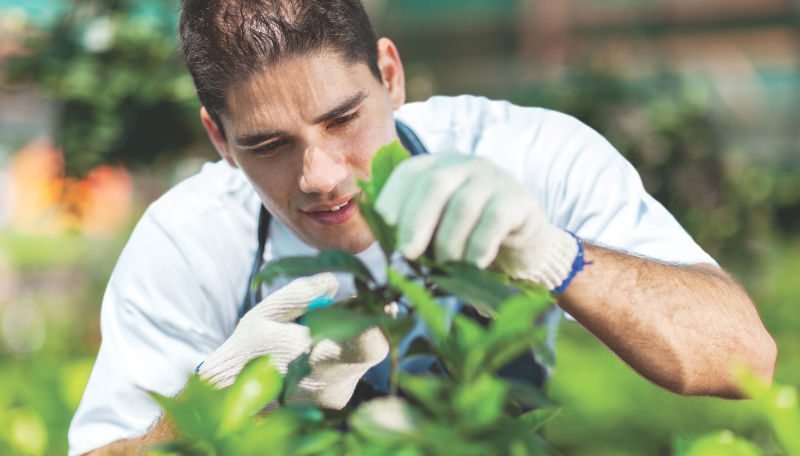
Gaining Insight into the Gardener’s Mind
Figuring out what you are going to do next year can be one of the most stressful processes of the season. How are you supposed to know what’s going to sell next year? Do you just replicate your orders from this past year?
Unless you’re one of a handful of companies in the industry, your record keeping probably isn’t helping you too much either. Sure, you know you sold out of geraniums this year, but do you know how fast they were gone and which colors were the first to go? Maybe things like that don’t necessarily seem too important. I mean selling out is selling out … right? But what if you could take that same space and increase your turns two or three fold — turn little gains into big ones?
At GrowIt! we’re examining data and information from more than 1.9 million plant ratings and 2 million plant searches done by hundreds of thousands of consumers this spring. We’re gaining a lot of insight into what people are actually interested in, and more importantly what they’re specifically looking for. We’ve put together our top three findings to help you strategize for next year.
1. People care more about what it does than what it’s called.
Out of the 2 million searches done on the app this spring, more than 90 percent (1.82 million) of them were performed by searching for desired characteristics rather than specific plant names. This includes items such as color, hardiness, plant type (flower, herb, etc.), planting location and feature. People want to find plants for very specific uses. What does that mean? Well it should be a big driver for a change in how plants are displayed in stores. If the perennial section is listing plants from A to Z, that’s not connecting with the consumers. We have to sell more than just a plant these days, we have to sell the “how” of it. How will someone use that specific plant?
Color is obviously one of the top attributes searched for. We also track plant ratings by color. This spring we saw that overall the top three colors of plants on the app that were selected in a favorable manner were bright pink, followed by light pink and then magenta. That might be expected; however, when we break it out by gender, we see that men have a very different set of favorite colors. The top three colors for men were black, maroon and plum. This spring, men on GrowIt! never rated a black-colored plant or flower negatively. It was 100 percent positive. Do you have products aimed at men? Create a display of your darker colored plants nearby.
2. Obviously we have to talk about succulents.
Even though people are searching by attributes more often, we did see about 200,000 searches by name this spring. Of those searches the top three in order were succulents, tomatoes and roses. As an industry, we have seen an explosion in succulents in the last few years. This only further validates it. People searched for succulents twice as much as the next popular plant (tomato). This asks the question: Are you doing enough with succulents? It’s becoming clear that they aren’t a fad and that they’re worth much more than one tiny corner space in your greenhouse. It’s no longer a side thought for consumers. For a lot of people it’s their main plant interest. Even though it’s a change we as an industry might feel is strange, succulents are quickly becoming a favorite plant category for a lot of consumers.
Also making its way into the list of top ten searches was lavender. In a month, lavender climbed from the ninth ranked search to the sixth ranked search! That put it above petunias (of any sort), geraniums and impatiens. What are you doing with lavender next year?
3. Consumers know a lot less about plants than we might expect.
Sure we don’t expect the average consumer to know every single plant name, and we understand that they might not even know most of the scientific names of the plants that they purchase. That’s why we have a “Help Me Identify” feature on GrowIt!, where community members can identify each other’s plants.
Since May 1, there have been 5,447 plants identified on the app. Fifteen percent of all the identifications made came from three types of plants: daylily, hosta and peony. These are three of the most common types of plants in the garden! We’re talking about some of the most old-school garden plants — and people still don’t know what they are. A lot of this comes from first-time homeowners venturing out into the garden for the first time.
Even though this might seem sad in a way, it should be a good sign. This means new people are getting into the garden for the first time, and it puts you in a position to be an expert. Help your customers, guide them. Just remember that they will be confused quickly because they’re starting from the beginning.
4. Bonus: Do something with pineapple!
This spring we featured an advertisement talking about how to grow your own pineapple. It was shared on Facebook more than 50,000 times and commented on by more than 8,000 people. Turns out, almost no one knows how a pineapple actually grows. It’s something new, fun and unique. Due to our content and advertising around starting your own pineapple from table scraps, we were able to drive thousands and thousands of searches in the app for pineapple. Whether you lead a workshop on starting your own or put together a pineapple starting kit, it’s a content goldmine. Find a way to capitalize on pineapple in your own way!
Obviously these aren’t the only trends we’re seeing as the garden consumer changes the way they operate, but it’s a little something to get you started.


 Video Library
Video Library 




















